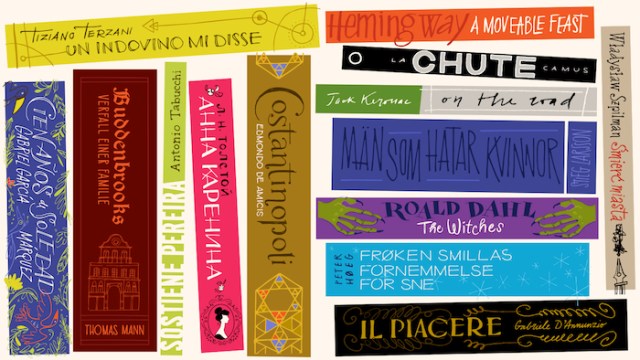The most cherished cluster in bright rooms, amid smells of good coffee and furniture polish. Those taken for granted huddle in the gloom, the air thick with their scent. The ranks of the forgotten, meanwhile, moulder and curl in wooden shacks, exposed to rain and sun alike. The books of Hay-on-Wye outnumber its human inhabitants by an estimated 6,800 to one. Coded and catalogued, labelled and priced in pencil, they are as numerous as rats in a royal palace. Books are the cumulative livelihood, directly or indirectly, of hundreds living in this town, and the draw for the many hundreds of thousands more who come to visit. They contain every imaginable world within their covers, our sum knowledge, every hope and every fear, in scores of languages by countless hands. As varied and numerous as these volumes may be, however, each and every one – and in large part, the people who depend on them – are here due to the vision of just one man.
Happily, Richard George William Pitt Booth showed little talent for his chosen profession of accountancy. He drifted instead back to a childhood obsession with books, and opened his first shop in Hay’s old fire station in 1962. He quickly worked out how to turn paper into gold, mining the neglected libraries of decaying country houses owned by an increasingly obsolete and penniless aristocracy, and leapfrogged his way into ever-larger premises. Less than a decade later, Booth parked his Rolls Royce Phantom V outside Hay Castle, his new home. On April Fool’s Day 1977, in a move that secured Hay’s place in the popular imagination, he proclaimed himself Richard Cœur de Livre, king of the independent realm of Hay on Wye. He made his horse Caligula prime minister, his girlfriend April the Duchess of Hay and Offa’s Dyke. With the stroke of a pen, the legend of Tref y Llyfr – booktown – was born.
Just as its king has always been larger than life, so Hay too punches above its weight. This tiny settlement in the Welsh hills boasts barely 1,500 inhabitants, and can be strolled around in an afternoon. Most of the town’s booksellers are stuffed into the grid of interlocking lanes and miniature squares below the castle, with picturesque names like Bear Street, Lion Street, Butter Market, Bull Ring. The shops run the gamut from the grandiose to the threadbare, taking in generalists and specialists, bargain basements and purveyors of rare editions. Books are sold at just about every price, and on just about every subject you could imagine. At Richard Booth Books, named for its erstwhile proprietor, the only dust in evidence dances prettily on the sunbeams flooding in through the skylights. It is the largest and arguably the finest of all, regally housed over three floors behind an intricately tiled façade. If this photogenic emporium is Hay’s Versailles, then the Hay Cinema Bookshop out on the edge of town, and also once owned by Booth, is its Gormenghast. The corridors of this fortress stretch into the distance, giving the whole warren a subterranean air. It is hard to decide which of the two has the greater charm.
Beyond the assembled gentry of permanent booksellers, Hay also boasts a grand seasonal court. Every year, London’s literati up sticks and flock to marquees pitched in the fields outside town for the annual literary festival. They occupy every hotel, B&B, holiday cottage and swiftly evacuated local property for miles around, booking them up for years in advance. Canvas was originally raised to give the festival room to breathe, but it has since spilt back into the narrow streets with plenty to entertain bystanders and serious buyers alike. As the punters gather in droves – over 200,000 at last count – the town prepares for its yearly infusion of capital, the dealers’ rolls of pound notes the systole and diastole of booktown’s lifeblood. While the cold fingers of the 21st century economic malaise reach even here, and there is the odd boarded up shopfronts where once there were books, Booth’s vision for a thriving local economy remains largely intact. In tribute, the literary festival has spawned copy cats from Nairobi to Segovia, and permanent booktowns based on Hay’s model are found as far afield as Finland, Malaysia, and South Korea.
You can find antiques here too, and crafts, textiles, camping gear, and even Tibetan calligraphy, but don’t come unless you are willing to pay homage to books, head bowed, fingertips dusty. If pilgrimage appeals, you might like to know that the king of Hay still lives above his kingdom of books. His castle, half ruined, is more Gormenghast than Versailles, crows wheeling overhead. While his kingdom has been declared a commonwealth, and the regiment of books guarding his castle is sunbleached and tattered, Booth’s shadow is long. This is still very much a town built in his image.
This article is originally from Cereal Magazine Volume 6, published on 06/06/14.
